Contents
- Content Marketing in the Gaming Industry
- Player Focused Content Marketing
- World Building And Game Sales
- Influencer Content Marketing
- Making The Most Out Of Conventions
- Showing Your Human Side
Content Marketing in the Gaming Industry
When it comes to Content Marketing in the gaming industry, it is typically boiled down to working with influencers on sponsored advertising campaigns, mixed in with technical development updates. However, there is actually a huge range of different content strategies that can be put in place to help promote your game, as well as promote your development studio itself. Standing out from the norm is the key to success in the gaming industry since both the AAA and Indie scenes are now saturated.
Player Focused Content Marketing
The best way you can use content to create a community around your game is by creating content with a player focus. By putting the player, and therefore the target audience, at the forefront of your content, you build trust with them. They come to see that you value them, and that makes them value you in return. This is invaluable, as it creates a long-lasting bond between you and your audience that will help to boost sales and interest in the game.Guide Content
Before we go into some of the more unique and different types of content that you can creator around your game, we wanted to touch on one example of player-focused content that is often overlooked but is also really easy to do in the short term; the creation of guides for your game. By this, we don’t mean walkthroughs like you would find on GameFAQs, but rather useful information to help players understand how the game works. For example, if you are developing a team-based shooter similar to Battlefield, you can write introductory guides to the different types of roles that characters play. A guide explaining the basics of how a Medic role plays differently from a Scout role can help players know what they want to play as and overcome the class anxiety they feel. This will then help players feel more comfortable buying and playing the game whilst also making them see that you care about them as much as the sales of the game. This feeling of being cared for by the developer will then spread through Word of Mouth, as well as help to earn backlinks and user engagement that help with your SEO rankings too. Now, with that said, let’s move on to some of the more niche yet highly effective ways to build a community and increase game sales through content marketing.World Building And Game Sales
One area of a video game that is often overlooked for its marketing value is worldbuilding and lore. This aspect of the game can be one of the most challenging parts of the writing process, but once the game is done, it gets largely forgotten until an expansion or prequel starts development. However, the worldbuilding behind your game offers a brilliant way to grow your audience and reach new players, and the hardest parts of it are already done by the time you want to release the game!Using Video and Animation Content To Grow Interest
It’s common knowledge that video content is one of the biggest and most engaging forms of content, especially with the likes of YouTube and Twitch dominating the gaming industry. But whilst livestreaming, let’s play videos, and other such content is widespread, there are a lot of avenues left largely unexplored by game development studies.Original Video Content
One recent example of this is the release of Arcane on Netflix. Being an animated series based upon League of Legends, Arcane allowed developers Riot Games to explore the lore and world of the game in a way that wasn’t possible with the type of game that League of Legends actually is.
Restricted by the MOBA genre traits and gameplay experience that players expect, Riot Games would have faced a great challenge to introduce the story-driven narrative of Arcane into the game itself. So by branching out and creating an animated series, they opened up the doors to add far more flavour to the world they created.
Arcane was released on Netflix in November 2021, immediately gaining large amounts of attention. By publishing the series on Netflix, Riot Games were able to reach a far wider audience, including a huge number of people who had never heard of League of Legends.

As you can see from the chart above, this led to a huge spike in interest for the League of Legends within Google’s Search Results. Whilst that initial spike trailed off after a few months, the average level of interest in search results has remained higher than in the previous four years.
However, you don’t need a full production budget at the same level as Riot Games to achieve this. Using the assets from your game, you can create shorter video animations like the trailers that Supercell make, but with an ongoing narrative. This then gives you the ability to create long narrative video series that can keep people hooked and engaged throughout.
Using The Right Release Schedule
The spike and subsequent decline of search interest for the League of Legends party came from the release schedule of Arcane. Released to the public in 3 sets of 3 episodes through November 2021, by the 20th the entire series was binge-watchable. This meant that the hype around it started to fade from then on.
On the other hand, if the 9 episodes had been released on a weekly basis, then the series would have lasted until the start of January. This could have increased the duration of viewership and increased interest in the series considerably.
Making The Binge-Watch Culture Work For You
Of course, we need to take into account the “binge-watch” culture that is engrained into Netflix and general TV viewership. Whilst this sort of viewing behaviour is becoming more common, when it comes to online video content such as YouTube, binge-watching takes on a new form.
For example, with the way YouTube’s recommendations algorithm works, if a user watches a video about your game, YouTube will start to recommend other videos about your game to them. This leads to the user’s binge-watching, taking them down the proverbial rabbit hole of content that focuses on your game.

This behaviour can be utilised to your advantage by creating a wide variety of YouTube content. For example, Square Enix’s Creative Business Unit III create lyrical music videos, patch update discussions, gameplay videos and more, all focused around one game. This means that after the viewer has finished watching one video, there is a wealth of other content for them to binge-watch.
The benefit of doing this is that the actual production costs are significantly lower than creating an episode of a series like Arcane. Because of this, you can create these types of videos quickly and easily so that you can build up a library of video content.
Expanding On Lore Through Content Marketing
The lore and backstory of a game can truly make or break it, depending on the genre in question. For example, the likes of Fortnight or PUBG don’t require any form of backstory to be entertaining to their target audience. But could you imagine games such as Dark Souls, Resident Evil or Mass Effect without the lore behind their worlds? They simply wouldn’t work.
With this in mind, the lore of your game actually gives you an amazing opportunity for content marketing.
Players get attached to worlds and characters, so by expanding on those elements, you give them even more to be attached to. This then leads to word of mouth in regards to the quality and depth of your lore, opening up the gates to an audience of potential players who value worldbuilding in their games.
A great example of this is the difference between World of Warcraft and other MMORPGs like FFXIV and Guild Wars 2. World of Warcraft has a huge and expansive lore, but choosing to expand it through novels alone. This had led to significant frustration for lore fans, leading the game to drop the story aspects to a very low priority in favour of raid content.
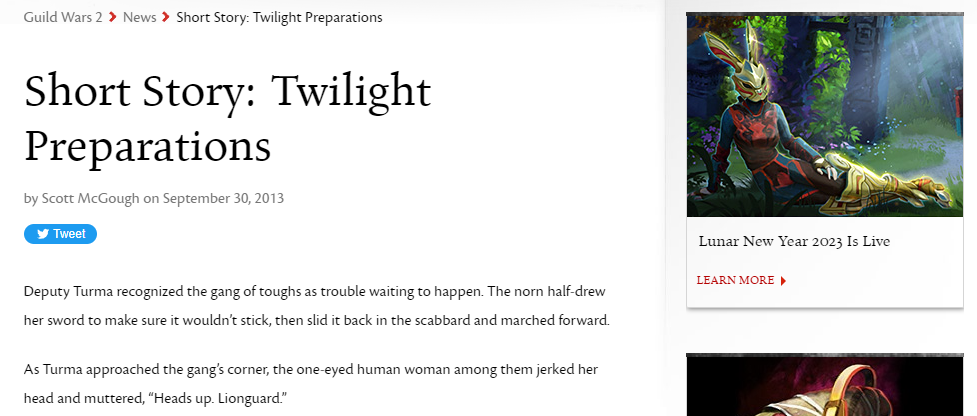
On the other hand, Guild Wars 2 and Final Fantasy XIV prioritise their backstory and worldbuilding, hosting short stories on their website that are freely available to everyone. In both cases, these are well written and add to the history of characters or locations, such as this Guild Wars 2 short story.
However, this then caused the player base of these two games to be story-focused players, so the raid-style content became a lower priority for the developers.
An interesting middle ground for this is Overwatch, where the backstory of the Heroes is beloved by the players, but the gameplay itself hasn’t changed. This is likely due to the fact that whilst lore is expanded upon, it is done so at a measured rate for the audience.
Therefore, take a look at the player base and target market for your game to determine at what level you should be expanding your lore. From there, put together a content calendar and strategy based around your findings so that you can build up player loyalty and grow Word of Mouth marketing, as well as SEO rankings from the content itself.
Highlighting Player-Generated Lore
The last point to cover regarding World Building is how you can actually use player-generated lore to gain more traction with your target audience.
If we were to take a look at the miniature wargaming industry for a second, Games Workshop developed Warhammer 40,000’s Space Marines (and many other armies) with the ability to be heavily customised. Sticking with the armies of the Space Marines specifically, players are able to make their own “Chapters” of the Marines, with their own lore, colour scheme and more, as shown in this article on their community website.

Influencer Content Marketing
Speaking of Influencers, the next content marketing strategy we wanted to talk about was Influencer Marketing. Now obviously, this is the most widely known form of content marketing within the video game industry, but there’s more to it than just giving game keys to influencers or paying them to promote your game. In fact, the traditional sponsorship method has become a meme at this point, with the wider gaming community constantly laughing at and generally getting tired of all of the Raid Shadow Legends and Genshin Impact sponsorships. Therefore, we are going to analyse two different influencer marketing campaigns that are vastly different from the normal methods, to show you how you can stand out from the crowd. Please note, however, that if you are directly asking influencers to promote your product, you should be prepared to pay for their services.New Product Release Campaigns
Going back to Games Workshop and the wargaming industry for a second, we wanted to look at the release of the Horus Heresy game and the creator event that Games Workshop ran to promote it. Rather than just pay a tonne of content creators to showcase different miniatures or talk about the new rule book, Games Workshop opted to use that budget to actually fly the content creators over to Warhammer World in Nottingham. From there, the creators were each given one of the armies from the game, with a bunch of models, and asked to paint the models in their own style whilst adhering to the colour schemes of the specific armies.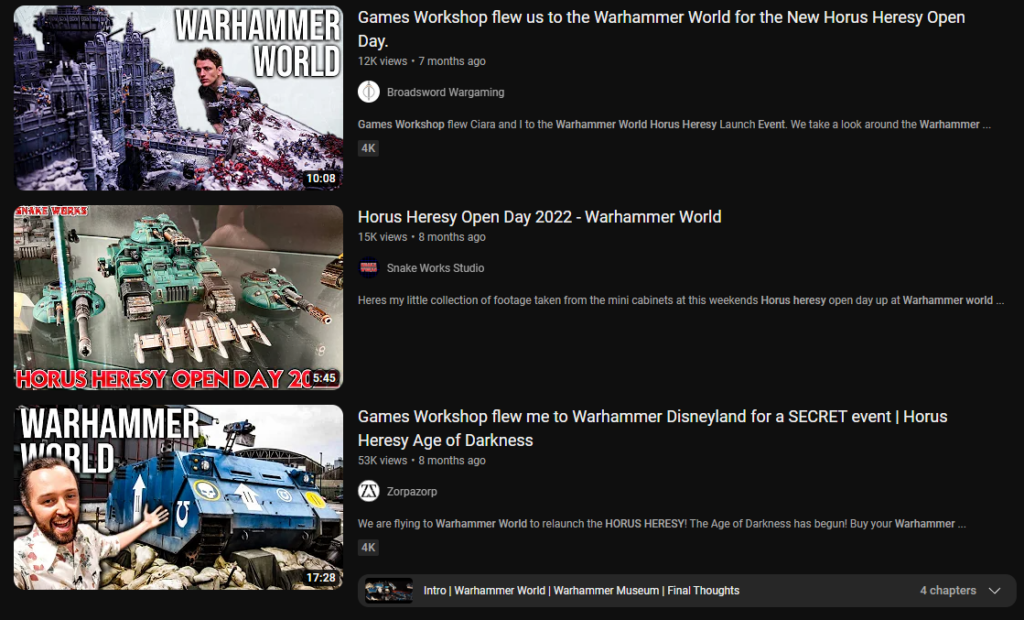
What was in it for the creators, you ask?
Well, those models were then used in promotional content made by Games Workshop themselves before being put on display at Warhammer World!
By taking this approach, Games Workshop was able to tap into the pride of the content creators, who all wanted to have their models showcased. Because of this, videos and articles began to appear from the creators talking about the experience itself, rather than the products. This content was far more organic and natural than paid influencer marketing as it was focused on the creators themselves.
For example, this vlog-style video from Play On Tabletop shows the creator (Nick) meeting with other community members and creators, showcasing the models he and his friends painted, giving a brief tour of Warhammer World and just generally enjoying the game and experience.
This type of content builds up excitement and interest for both Warhammer itself as well as the Horus Heresy release, because it organically showcases the joy of being part of that community.
Therefore, by working with influencers in this manner rather than just paying them sponsorship all the time, Games Workshop were able to promote the Horus Heresy release whilst also growing the community around their games even more. That community growth will then help to generate more sales and bring in more players for years to come, rather than just give a short-term Return on Investment.
“But how does that apply to video games”, I hear you ask!
Media Tours are a great way to replicate this sort of content creator collaboration. Choosing a small number of creators that you want to work with, you can fly them out to your development studio, show them around and let them speak to developers.
Then, you can give them access to play an alpha or beta version of the game whilst they are there at your studio. On top of this, you could take a page out of Guild Wars 2’s book and even allow them to create a character of themselves which will act as an NPC in the game, similar to what NCSoft did for the content creator Rookuri.
Whilst an NDA would be required for certain aspects of the game’s development, this sort of event could create a very similar level of content and hype as Games Workshop’s Horus Heresy event.
By thinking outside the box for your releases, you can work with your community to grow, leading to a long-term growth strategy that will constantly improve your Return on Investment.
Player-Focused Design Contests
Another way to build your community and work with influencers outside of the typical sponsorship is to use contests for player-designed content.
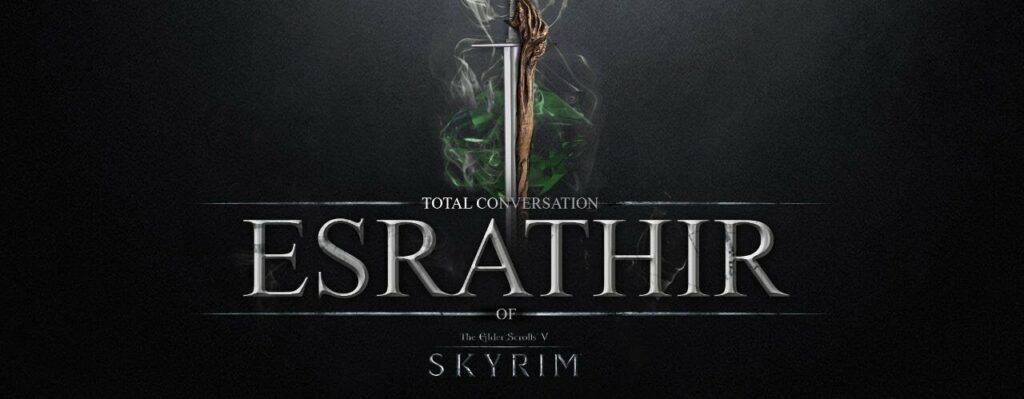
If you look at PC gaming over the last 20 years, the modding community has gone from strength to strength. Players love to be able to add their own flavour to a game, be it as small as a unique hairstyle for a character all the way to Total Conversion Mods where they make their own lands, levels and more.
This actually creates a wonderful opportunity for collaboration with influencers, as you can set up a contest for players and influencers to design an element of the game. It could be a contest to design a new outfit for a player type in a First Person Shooting game, a building of interest in an Open World RPG, or anything else you want.
This can then be publicised on your website so that influencers pick up on it, or if you are working directly with them, ask them to promote the event instead.
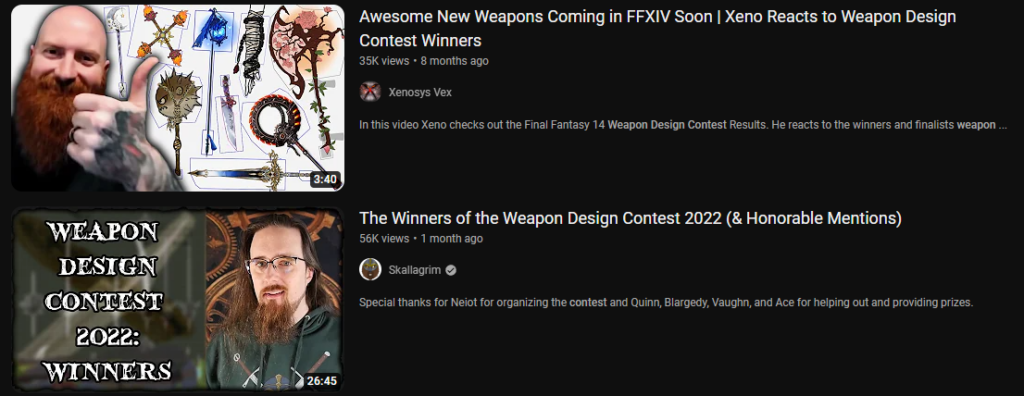
After that, once the winners are announced and put into the game, this will almost certainly be picked up by both the influencers you are working with and others that cover the game. As such, you get the potential for a wide-reaching influencer campaign without needing to go down the typical advertising route.
These sorts of contests can even be held during gaming conventions to give your booth that bit of extra flair compared to other game development studios. That also leads us nicely into the next area of community and communication we wanted to touch on.
Making The Most Out Of Conventions
The gaming industry is full of conventions, from E3 and the Tokyo Game Show to smaller events like PLAY Expo Manchester. These events are some of the most exciting points of the year for gamers and offer huge marketing opportunities for game developers.
However, most development studios similar focus on rehashing the same format for each even, showing trailers and demos at booths or on stage. However, there are ways to get far more reach out of the cost of attending these conventions, and we’re going to look at one of the most cost-effective ways to do this.
Developer Vlog Content
In previous years, there was a trend of specific game developers becoming semi-celebrities within the industry. This has dialled down along in recent years, meaning that there is now an opportunity for you to take that spot.
By having a developer record their time at the event, both on the floor and off it, you can build up a number of videos showing the people behind the game. Footage of exploring the convention, setting up the booth, talking over dinner and more can give a way for your game’s community to connect with you on a more personal level.
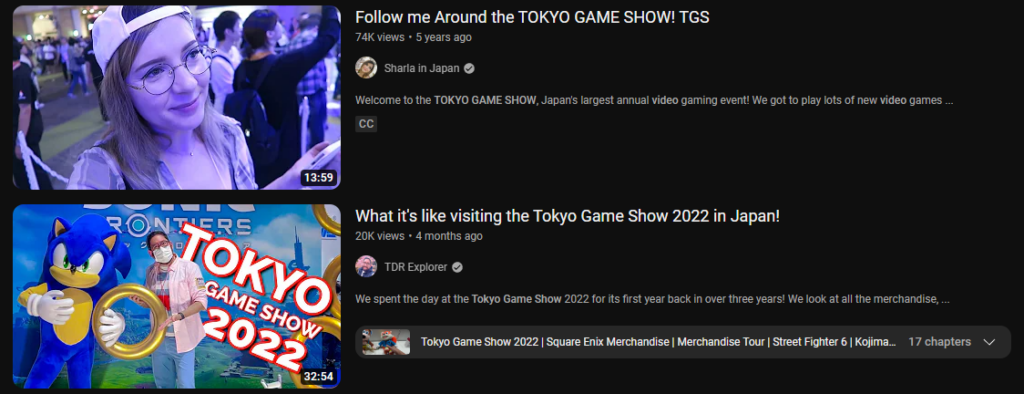
This connection is incredibly powerful, as it bolsters the community’s desire to support you and your games.
This way, you can use these conventions to promote your community connection as well as just showing off your game. Doing this will help solidify a long-term relationship with your target audience, leading to ongoing support and sales.
In fact, that connection can even continue through to the release of your next game, helping to increase initial sales of future projects too!
Showing Your Human Side
As you may have worked out from the last section, creating a connection with your audience and playerbase can be a vital part of the success of your game. This is achieved by allowing your community to see the human side of your development studio.
“People buy people” is an old but still very accurate statement, and is very prevalent when it comes to the modern video game industry. Players are far less likely to continue to support a company they view as “faceless” in comparison to one where they have a human aspect to latch on to.
For example, the likes of Noaki “Yoshi-P” Yoshida, Hideo Kojima and Gabe Newell are all very well-known members of their respective development teams. Their names and faces alone can build intrigue and excitement for a game that they are attached to.
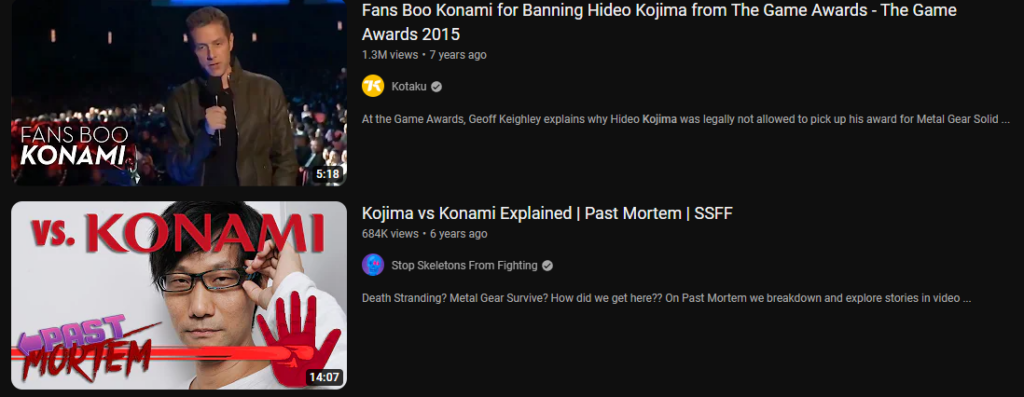
In fact, Hideo Kojima leaving Konami created a massive backlash within the wider gaming community, and the support for Death Stranding when it was announced was through the roof, despite no one actually knowing what type of game it was even going to be. That excitement was driven purely because it was being developed under the eye of Hideo Kojima.
A similar thing has happened with Final Fantasy 16, as the general opinion of the single-player Final Fantasy games has soured ever since the release of the thirteenth entry. However, as soon as the gaming community found out that Yoshi-P was directing it, interest levels skyrocketed.
These are clear examples of how people still buy people rather than just the product. So making this part of your marketing strategy is almost a necessity these days.
With all of this in mind, we wanted to look at two methods that you can do just that!
Developer Interviews
The first way to humanise your development studio is through developer interviews and updates. However, whilst many studios already do this, these updates are typically written or scripted in a way that only other developers gain any benefit from them.
Instead, it is better to structure them so that they are appealing to your target audience and community.
Using the examples above, Yoshi-P is the face of his teams’ developer updates, branded as Live Letters. These are livestreams where Yoshi-P sits down and runs through all of the things that the team are working on, but presents them in a way that the players want to see. He covers new gameplay elements, new story beats and other elements of the game that will directly affect the end user rather than talking about how the code of the game is being tweaked.
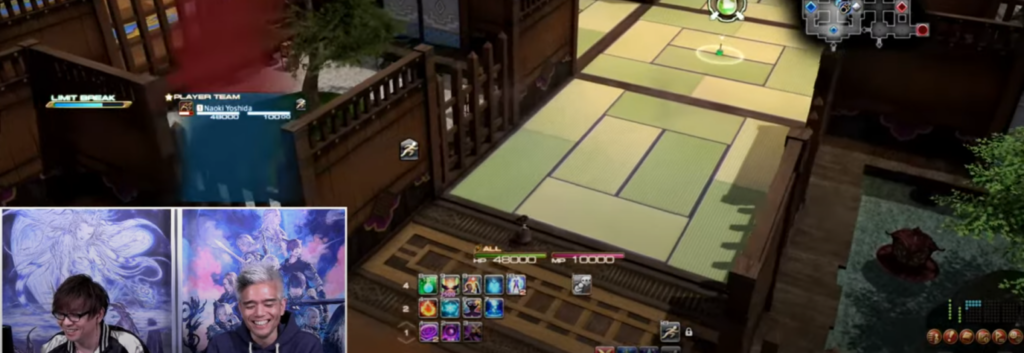
This turns these live developer interviews into major events that influencers restream and react to. The community gathers around the event, creating their own content from it, interacting with Yoshi-P and growing ever more attached to both him and the development studio.
Even when mistakes happen on camera, they don’t hide it or shy away from it. Yoshi-P will make a joke about it, laugh with the community, and move on.
It’s this human element that really shines through when the developer interviews and updates are handled in this manner.
By taking inspiration from this, you can modify your developer updates to create a community-focused event that can lead to more exposure and awareness of the game whilst also growing a personal brand around the developer hosting the updates. From there, the community aspect of the game will be strengthened even further, creating long-lasting bonds and support from your target audience.
Comedy Goes A Long Way
The second method to gain that human connection with your audience is through comedy. As mentioned in the last section, when something goes wrong during the development updates, Yoshi-P will joke about it with the community.
Hideo Kojima is also known for his humour, but possibly the most well known person for doing this in the gaming industry is Yoko Taro, creator of the Drakengard and Nier franchises.
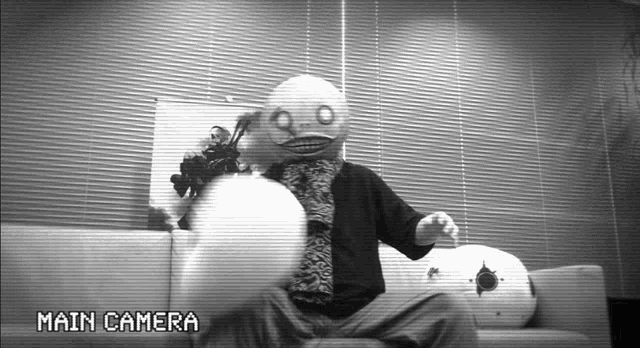
Yoko Taro has become an incredibly well-known member of the Nier development team, despite never actually showing his face. His over-the-top actions and antics have created an air of fun and entertainment no one else in the industry has matched.
In interviews, he messes around and just has fun, coming across as a loose cannon of sorts. His answers to questions are cryptic, and he always wears a mask of the character Emil from Nier Replicant and Nier Automata. It is this quirkiness and uniqueness that made the gaming community fall in love with him.
Whilst we don’t recommend going down the exact same route as Yoko Taro, he is the perfect example of how adding comedy can really help connect with audiences.
How you go about this depends on your target audience and the type of game you are creating, so make sure you analyse the type of players who typically play your chosen genre. From there, work out what area of meme culture they fall in, and use that as the foundation to grow your comedic elements from.
However, make sure that the comedic elements come across as naturally as possible. Forced comedy is doomed to fail.
Where To Start With Your Community Growth and Content Marketing
We’ve covered a tonne of different options and strategies on how you can use video game Content Marketing to grow your community and sales, but it can be hard to know where to get started. From analysing your target audience to planning out your content calendar, there’s a lot to do.
If you find it overwhelming, we would be happy to help you put together your video game marketing strategy. Our team of content writers, SEO experts and Social Media consultants will work with you to maximise your ROI and sales.
So feel free to contact us today and get your video game marketing campaign started!

